33 Interest Rates and Monetary Policy Mc. Graw-Hill/Irwin

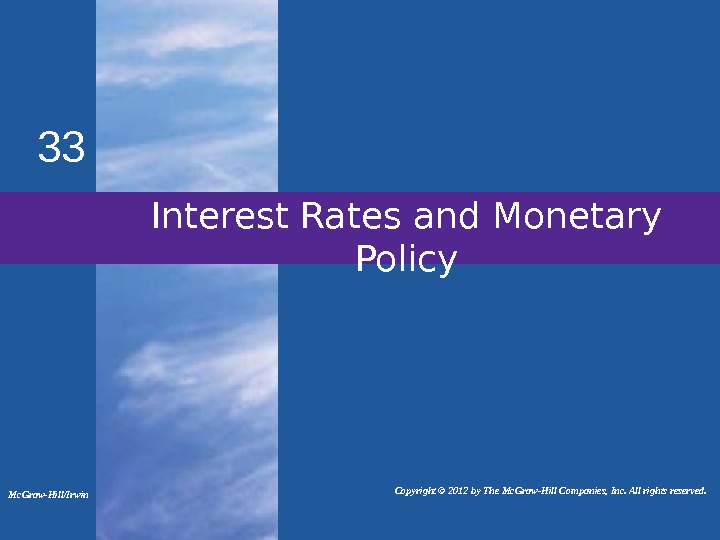
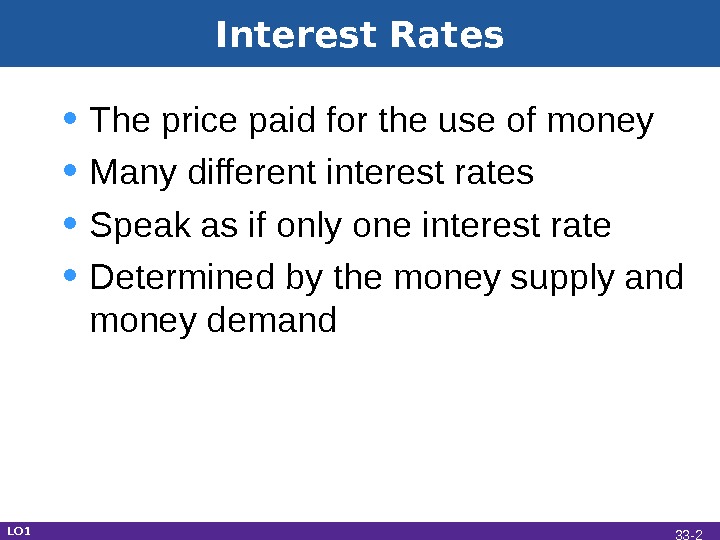
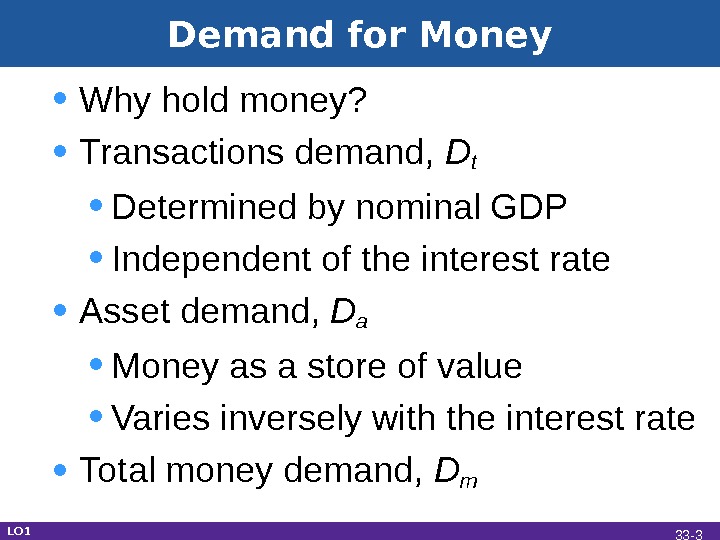
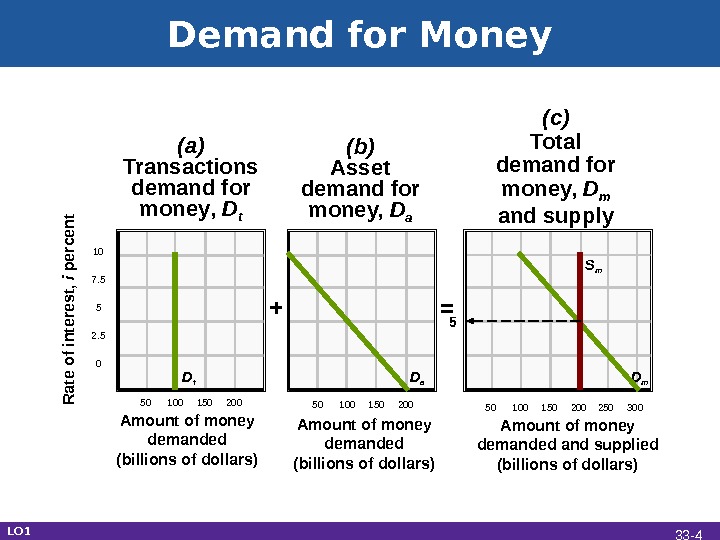
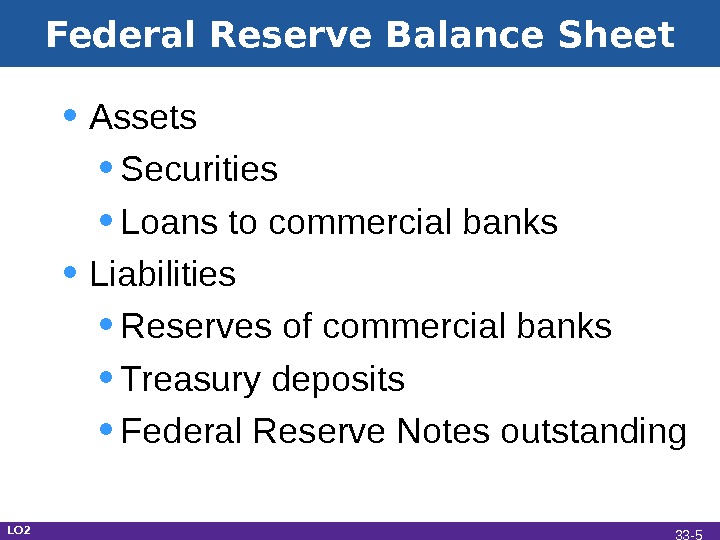
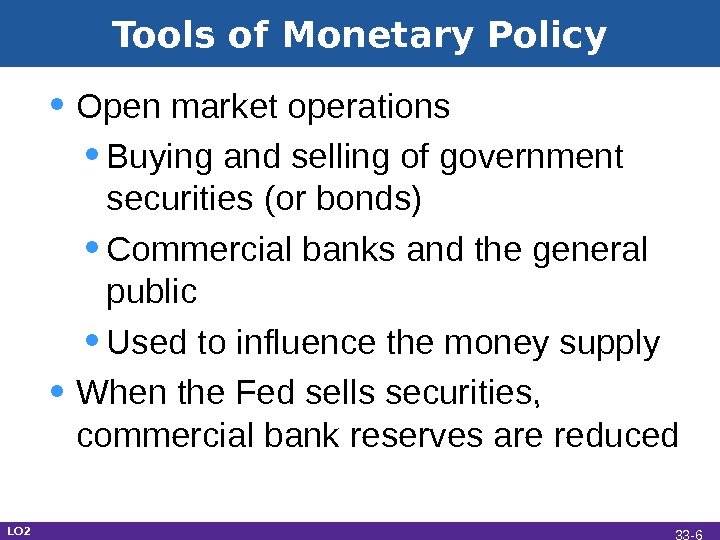
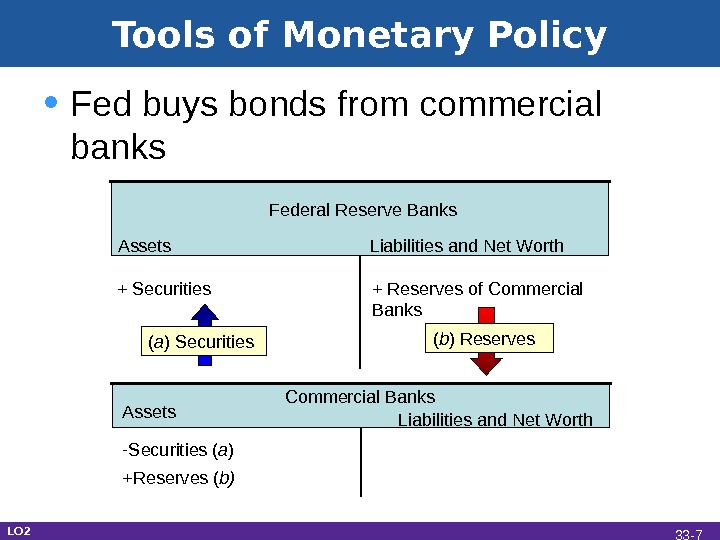
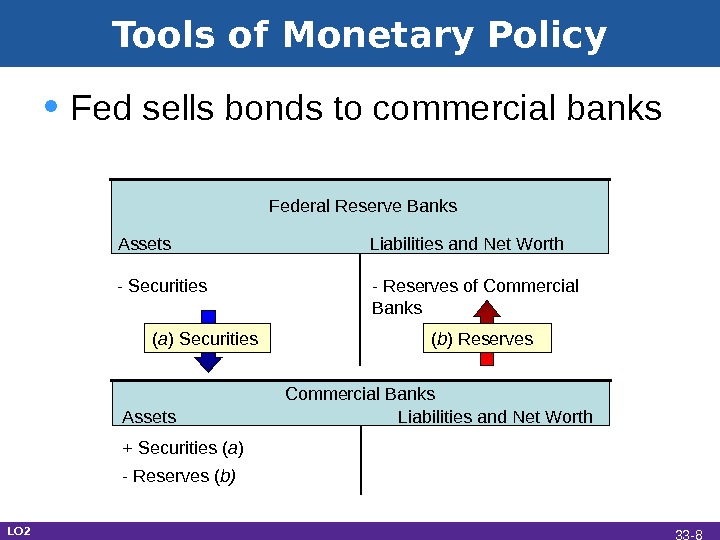
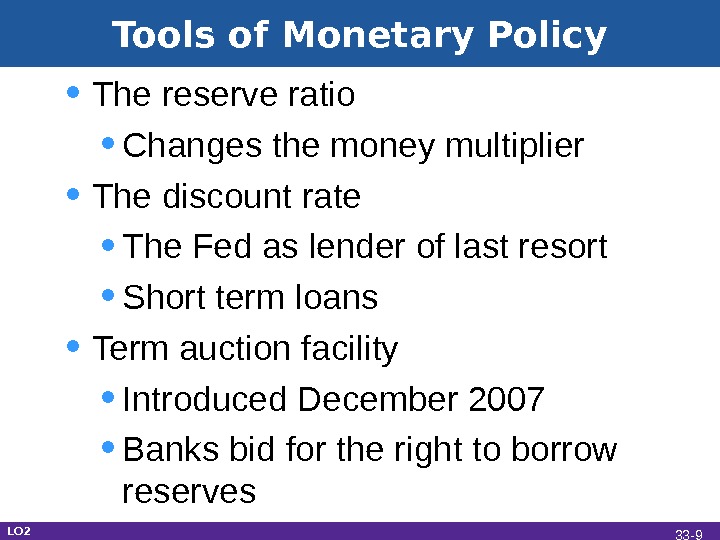
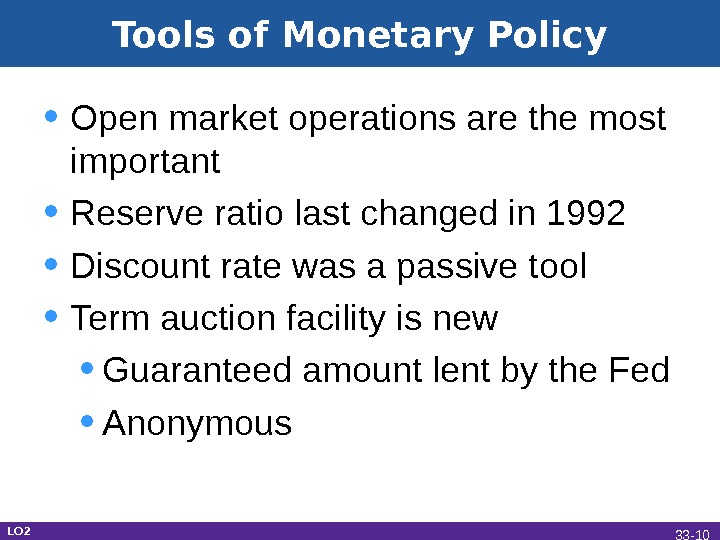
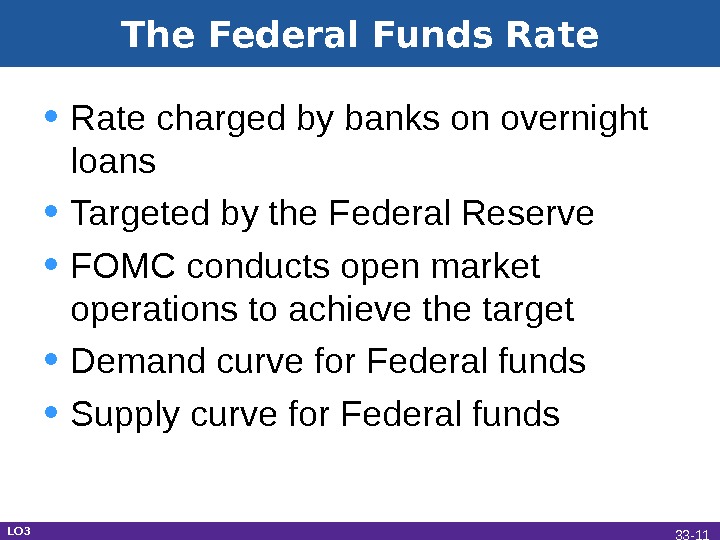
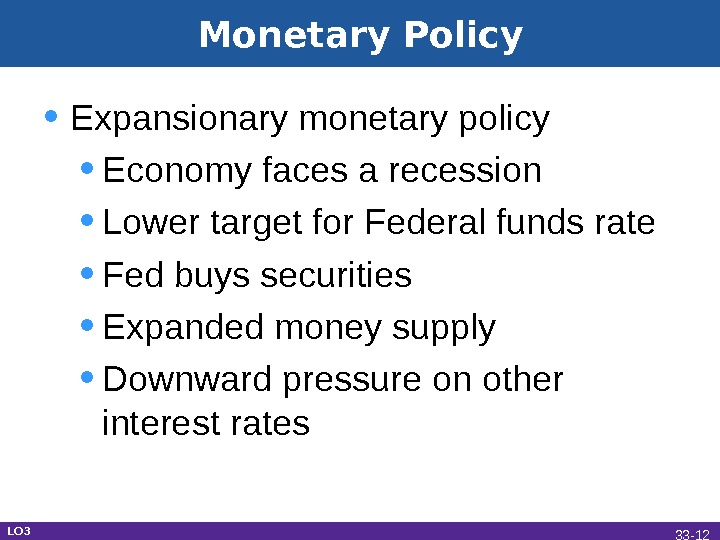
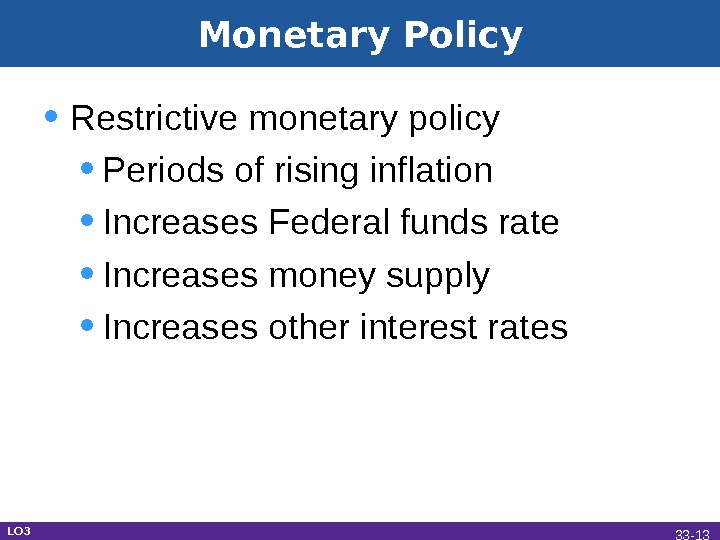
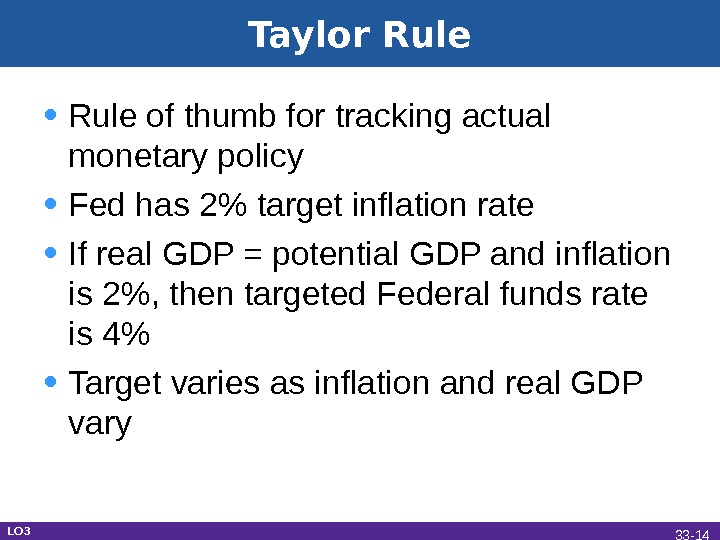
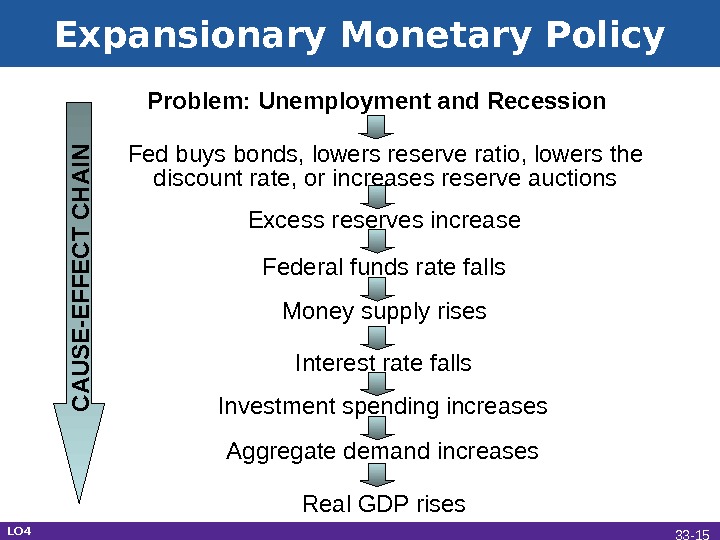
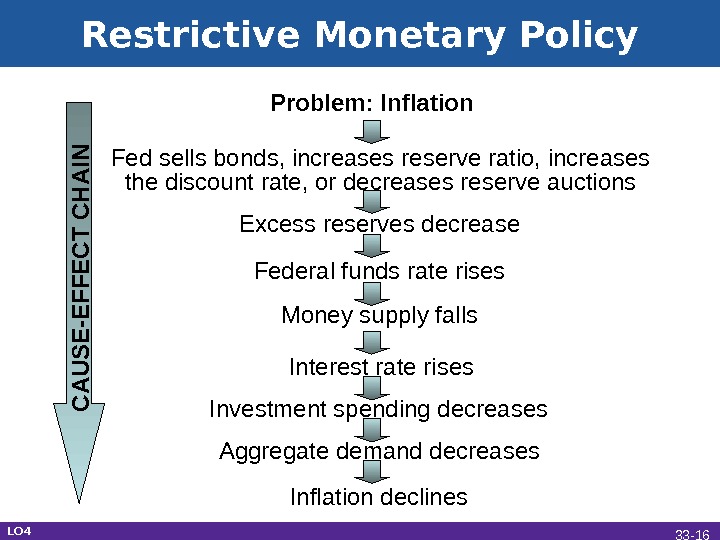
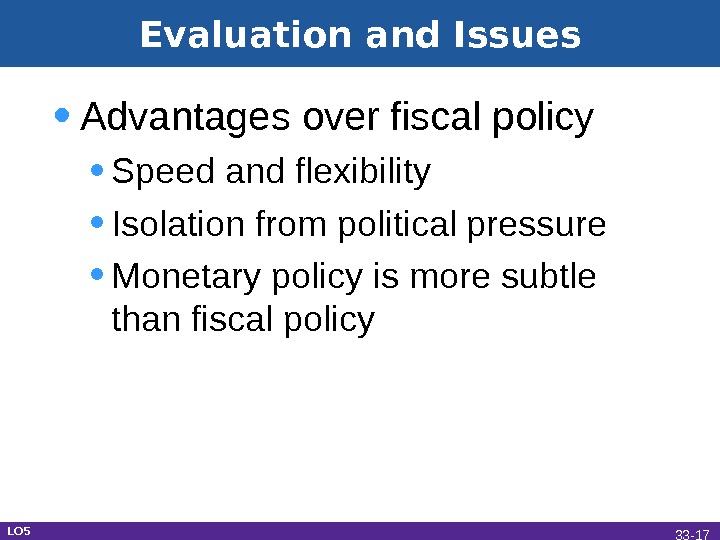

interest_rates_and_monetary_policy.ppt
- Размер: 591.5 Кб
- Количество слайдов: 18
Описание презентации 33 Interest Rates and Monetary Policy Mc. Graw-Hill/Irwin по слайдам
 33 Interest Rates and Monetary Policy Mc. Graw-Hill/Irwin Copyright © 2012 by The Mc. Graw-Hill Companies, Inc. All rights reserved.
33 Interest Rates and Monetary Policy Mc. Graw-Hill/Irwin Copyright © 2012 by The Mc. Graw-Hill Companies, Inc. All rights reserved.
 Interest Rates • The price paid for the use of money • Many different interest rates • Speak as if only one interest rate • Determined by the money supply and money demand LO 1 33 —
Interest Rates • The price paid for the use of money • Many different interest rates • Speak as if only one interest rate • Determined by the money supply and money demand LO 1 33 —
 Demand for Money • Why hold money? • Transactions demand, Dt • Determined by nominal GDP • Independent of the interest rate • Asset demand, D a • Money as a store of value • Varies inversely with the interest rate • Total money demand, D m LO 1 33 —
Demand for Money • Why hold money? • Transactions demand, Dt • Determined by nominal GDP • Independent of the interest rate • Asset demand, D a • Money as a store of value • Varies inversely with the interest rate • Total money demand, D m LO 1 33 —
 Demand for Money. R ate of interest, i percent 10 7. 5 5 2. 5 0 50 100 150 200 250 300 Amount of money demanded (billions of dollars) Amount of money demanded and supplied (billions of dollars)= +(a) Transactions demand for money , D t (b) Asset demand for money, D a (c) Total demand for money, D m and supply D t D a D m. S m 5 LO 1 33 —
Demand for Money. R ate of interest, i percent 10 7. 5 5 2. 5 0 50 100 150 200 250 300 Amount of money demanded (billions of dollars) Amount of money demanded and supplied (billions of dollars)= +(a) Transactions demand for money , D t (b) Asset demand for money, D a (c) Total demand for money, D m and supply D t D a D m. S m 5 LO 1 33 —
 • Assets • Securities • Loans to commercial banks • Liabilities • Reserves of commercial banks • Treasury deposits • Federal Reserve Notes outstanding LO 2 Federal Reserve Balance Sheet 33 —
• Assets • Securities • Loans to commercial banks • Liabilities • Reserves of commercial banks • Treasury deposits • Federal Reserve Notes outstanding LO 2 Federal Reserve Balance Sheet 33 —
 Tools of Monetary Policy • Open market operations • Buying and selling of government securities (or bonds) • Commercial banks and the general public • Used to influence the money supply • When the Fed sells securities, commercial bank reserves are reduced LO 2 33 —
Tools of Monetary Policy • Open market operations • Buying and selling of government securities (or bonds) • Commercial banks and the general public • Used to influence the money supply • When the Fed sells securities, commercial bank reserves are reduced LO 2 33 —
 Tools of Monetary Policy • Fed buys bonds from commercial banks Assets Liabilities and Net Worth. Federal Reserve Banks + Securities + Reserves of Commercial Banks ( b ) Reserves Commercial Banks — Securities ( a ) +Reserves ( b)Assets Liabilities and Net Worth LO 2 ( a ) Securities 33 —
Tools of Monetary Policy • Fed buys bonds from commercial banks Assets Liabilities and Net Worth. Federal Reserve Banks + Securities + Reserves of Commercial Banks ( b ) Reserves Commercial Banks — Securities ( a ) +Reserves ( b)Assets Liabilities and Net Worth LO 2 ( a ) Securities 33 —
 Tools of Monetary Policy • Fed sells bonds to commercial banks Assets Liabilities and Net Worth. Federal Reserve Banks — Securities — Reserves of Commercial Banks + Securities ( a ) — Reserves ( b)Assets Liabilities and Net Worth( a ) Securities ( b ) Reserves LO 2 33 —
Tools of Monetary Policy • Fed sells bonds to commercial banks Assets Liabilities and Net Worth. Federal Reserve Banks — Securities — Reserves of Commercial Banks + Securities ( a ) — Reserves ( b)Assets Liabilities and Net Worth( a ) Securities ( b ) Reserves LO 2 33 —
 Tools of Monetary Policy • The reserve ratio • Changes the money multiplier • The discount rate • The Fed as lender of last resort • Short term loans • Term auction facility • Introduced December 2007 • Banks bid for the right to borrow reserves LO 2 33 —
Tools of Monetary Policy • The reserve ratio • Changes the money multiplier • The discount rate • The Fed as lender of last resort • Short term loans • Term auction facility • Introduced December 2007 • Banks bid for the right to borrow reserves LO 2 33 —
 Tools of Monetary Policy • Open market operations are the most important • Reserve ratio last changed in 1992 • Discount rate was a passive tool • Term auction facility is new • Guaranteed amount lent by the Fed • Anonymous LO 2 33 —
Tools of Monetary Policy • Open market operations are the most important • Reserve ratio last changed in 1992 • Discount rate was a passive tool • Term auction facility is new • Guaranteed amount lent by the Fed • Anonymous LO 2 33 —
 The Federal Funds Rate • Rate charged by banks on overnight loans • Targeted by the Federal Reserve • FOMC conducts open market operations to achieve the target • Demand curve for Federal funds • Supply curve for Federal funds LO 3 33 —
The Federal Funds Rate • Rate charged by banks on overnight loans • Targeted by the Federal Reserve • FOMC conducts open market operations to achieve the target • Demand curve for Federal funds • Supply curve for Federal funds LO 3 33 —
 Monetary Policy • Expansionary monetary policy • Economy faces a recession • Lower target for Federal funds rate • Fed buys securities • Expanded money supply • Downward pressure on other interest rates LO 3 33 —
Monetary Policy • Expansionary monetary policy • Economy faces a recession • Lower target for Federal funds rate • Fed buys securities • Expanded money supply • Downward pressure on other interest rates LO 3 33 —
 Monetary Policy • Restrictive monetary policy • Periods of rising inflation • Increases Federal funds rate • Increases money supply • Increases other interest rates LO 3 33 —
Monetary Policy • Restrictive monetary policy • Periods of rising inflation • Increases Federal funds rate • Increases money supply • Increases other interest rates LO 3 33 —
 Taylor Rule • Rule of thumb for tracking actual monetary policy • Fed has 2% target inflation rate • If real GDP = potential GDP and inflation is 2%, then targeted Federal funds rate is 4% • Target varies as inflation and real GDP vary LO 3 33 —
Taylor Rule • Rule of thumb for tracking actual monetary policy • Fed has 2% target inflation rate • If real GDP = potential GDP and inflation is 2%, then targeted Federal funds rate is 4% • Target varies as inflation and real GDP vary LO 3 33 —
 Expansionary Monetary Policy Problem: Unemployment and Recession Fed buys bonds, lowers reserve ratio, lowers the discount rate, or increases reserve auctions Excess reserves increase Federal funds rate falls Money supply rises Interest rate falls Investment spending increases Aggregate demand increases Real GDP rises LO 4 C A U S E -E F F E C T C H A IN 33 —
Expansionary Monetary Policy Problem: Unemployment and Recession Fed buys bonds, lowers reserve ratio, lowers the discount rate, or increases reserve auctions Excess reserves increase Federal funds rate falls Money supply rises Interest rate falls Investment spending increases Aggregate demand increases Real GDP rises LO 4 C A U S E -E F F E C T C H A IN 33 —
 Restrictive Monetary Policy Problem: Inflation Fed sells bonds, increases reserve ratio, increases the discount rate, or decreases reserve auctions Excess reserves decrease Federal funds rate rises Money supply falls Interest rate rises Investment spending decreases Aggregate demand decreases Inflation declines. C A U S E -E F F E C T C H A IN LO 4 33 —
Restrictive Monetary Policy Problem: Inflation Fed sells bonds, increases reserve ratio, increases the discount rate, or decreases reserve auctions Excess reserves decrease Federal funds rate rises Money supply falls Interest rate rises Investment spending decreases Aggregate demand decreases Inflation declines. C A U S E -E F F E C T C H A IN LO 4 33 —
 Evaluation and Issues • Advantages over fiscal policy • Speed and flexibility • Isolation from political pressure • Monetary policy is more subtle than fiscal policy LO 5 33 —
Evaluation and Issues • Advantages over fiscal policy • Speed and flexibility • Isolation from political pressure • Monetary policy is more subtle than fiscal policy LO 5 33 —
 Problems and Complications • Lags • Recognition and operational • Cyclical asymmetry • Liquidity trap LO 5 33 —
Problems and Complications • Lags • Recognition and operational • Cyclical asymmetry • Liquidity trap LO 5 33 —

